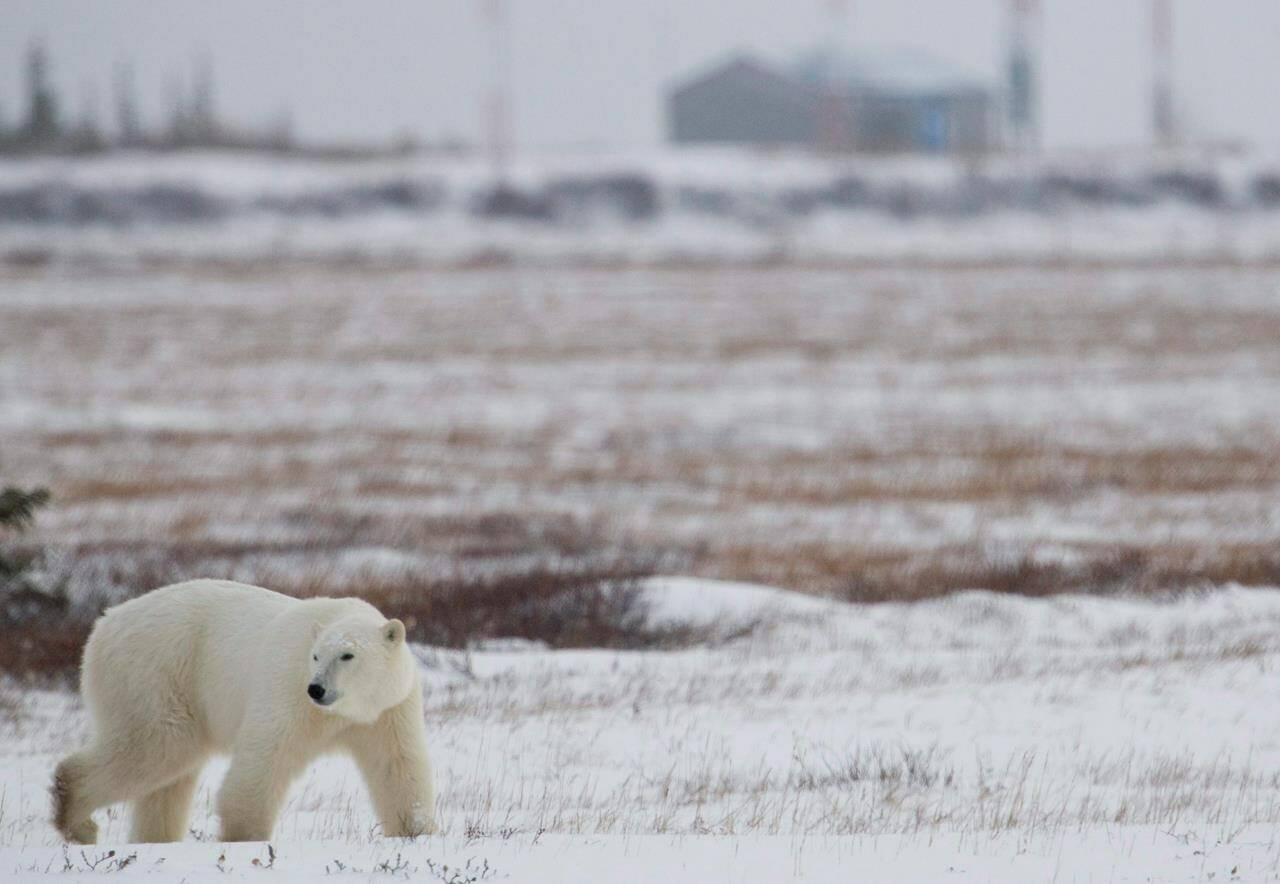Climate change and human impacts on the land are behind a growing number of encounters between people and polar bears around the Arctic, new research concludes.
“What we have seen is an increase in intensity (of encounters) and increased occurrences in places where polar bears don’t normally occur,” said Geoff York, a researcher with Polar Bears International and co-author of a new paper published in Oryx, a journal from Cambridge University Press.
Although no agency keeps a formal count, York said conversations with front-line managers in all countries with polar bears suggest that run-ins with people are increasing — especially around growing communities and their landfills.
“Polar bears will come a long distance if they can smell food,” York said. “If they can find a reliable source of calories, they will go to extraordinary measures to come back.”
Open landfills are common across the North.
Arviat, a Nunavut community along the western coast of Hudson Bay, has an open landfill and a population that has grown 12 per cent since 2016. A 2014 survey found the number of polar bears using the dump grew each year since record keeping began in the 1960s — even though the local bear population is shrinking.
Communities in northern Ontario are also starting to see bears come inland, specifically around landfills.
Climate change is also playing a role.
Diminishing sea ice cover robs the bears of the platform they need to hunt seals, forcing them to remain on land and look for other ways to feed themselves, such as landfills. As well, climate change has, to some extent, opened up the Arctic to humans.
“It’s a classic case of more bears being on shore for longer periods of time at the same time we’re seeing more human activity around the Arctic for the same reason,” York said. “We’re seeing a combination of those two facts — more polar bears on shore, some of which might not be in the best condition, and more people.”
In 2019, two Russian Arctic communities — both with nearby open landfills — experienced dozens of bears hanging around for weeks.
Ryrkaypiy saw about 60 bears, young and old, most in poor condition. In Belushya Guba, 52 bears haunted the landfill and tried to enter homes and public buildings — an unprecedented number thought to have been brought on by a long onshore fasting period following the loss of sea ice.
Landfill dining isn’t good for the bears, either, said York. Such sites are full of everything from plastics to chemicals to dirty diapers.
But if there’s food, bears don’t care.
“Their senses are saying, ‘Hey, this is awesome.’ “
Some communities have bear-proofed their landfills. Churchill, Man., has fenced its landfill and immediately buries the type of household waste that could be an attractant.
Bears are no longer an issue, said Susan Maxson, a waste consultant who worked on the Churchill landfill.
“We haven’t seen tracks around the landfill for years,” she said.
It’s not cheap, though. Churchill, with a population of about 900, spends about $250,000 a year just to store its waste, York said.
“That’s not sustainable.”
Maxson said the community is looking at replacing the landfill with either a composter or an incinerator for organic waste.
“We are hoping this will become a model for other communities,” she said.
Even if it is, it won’t entirely solve the problem.
Human communities, from an actual town to an exploration camp on the land, all smell like food to a bear. Besides, bears are curious.
“Communities themselves are an attractant,” said York. “It’s new, it’s novel.”
York calls for more research on human-polar bear interactions. Much can be learned from how those contacts have been managed in the south, he said.
“I think we can learn quite a bit from the Canadian West,” he said. “We’ve been bringing up some of the organizers from those groups to Churchill to share ideas.”
Polar bears and people aren’t going to stop running in to each other, said York. Quite the opposite.
“We’re getting more bears in more parts of the Arctic coming on shore for longer periods of time.”
Bob Weber, The Canadian Press
READ ALSO: VIDEO: How warming affects Arctic sea ice, polar bears

